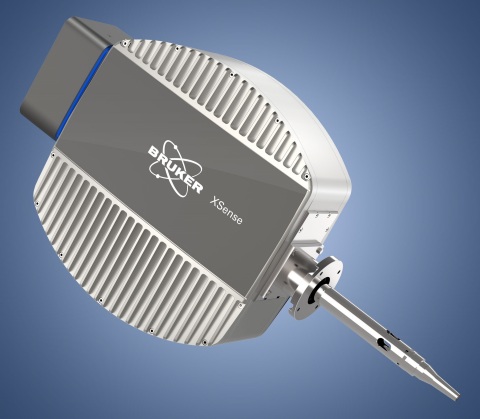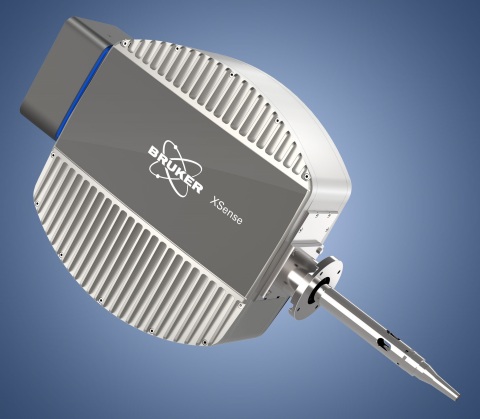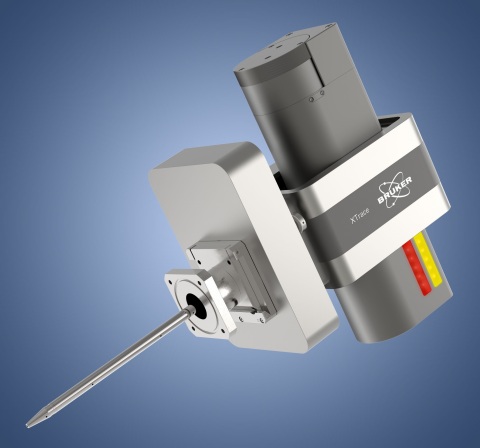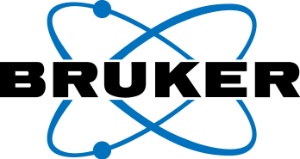INDIANAPOLIS--(BUSINESS WIRE)--At the Microscopy & Microanalysis 2013 Meeting (www.microscopy.org/MandM/2013), Bruker today introduces two new instruments which further expand its portfolio of high-performance tools for materials characterization in electron microscopes:
- XSense™ is a novel parallel beam wavelength dispersive X-ray spectrometer (WDS) for elemental analysis on scanning electron microscopes (SEM). Specifically designed for the lower energy range between 100 and 3,600 eV, the XSense spectrometer provides energy resolution down to 4 eV, enabling both excellent separation of closely spaced X-ray lines and highly sensitive trace element detection.
- XTrace™ is a new micro-spot X-ray source that enables photon-induced micro X-ray fluorescence (micro-XRF) spectrometry on SEM systems, in conjunction with Bruker’s energy dispersive X-ray spectrometer (EDS) detectors. In comparison with electron-excited X-ray spectrometry commonly used for elemental analysis on SEMs, micro-XRF spectrometry provides 20 to 50 times lower limits of detection, in particular in the mid-to-high energy range of the spectrum, adding the capability of detecting and analyzing trace amounts of higher-Z elements in the sample.
The new XSense WDS analyzer uses special X-ray mirror optics for efficient large angle X-ray collection and parallelization. A fully motorized 3-axis auto-alignment system ensures fast, reproducible and stable positioning of the focal spot. The parallel beam optics is fully retractable, and made of non-magnetic materials to avoid beam shift and image distortion. With a choice of six diffracting crystals, XSense can be tuned to provide optimum conditions for almost any application. Its advanced kinematics maintains optimum positioning of the active crystal with respect to the X-ray beam over the full scan range for maximum diffraction efficiency. An additional, secondary X-ray optics between crystal and detector further enhances peak-to-background ratios and sensitivity of the XSense WDS. Bruker’s unique detector management system actively controls the proportional counter’s internal gas pressure and automatically performs all high voltage and discriminator settings.
When attached to an appropriate port of the SEM’s sample chamber, the new XTrace is using a low-power micro-focus X-ray tube and focusing polycapillary X-ray optics to produce a highly intense X-ray beam for sample irradiation with spot sizes smaller than 40 microns. Due to the alignment of the focal spot to hit the sample surface at the same position as the SEM’s electron beam, the analyst can alternatively acquire both electron-induced and photon-induced X-ray fluorescence spectra from the same sample area.
While electron-induced X-ray spectroscopy provides high spatial resolution and excellent light element detection, photon excitation with XTrace is superior in sensitivity and allows trace element detection down to 10 ppm levels. Combining the information obtained with the two techniques can greatly enhance the accuracy of the analytical results.
Both the XSense WDS analyzer and the XTrace micro X-ay source are operated via ESPRIT 2.0, Bruker’s new and unique 4-in-1 analytical software suite which seamlessly integrates EDS, WDS, EBSD and Micro-XRF under a single user interface. ESPRIT 2.0 not only enables intuitive navigation within and between all four complementary methods, but also provides various possibilities for combining the data to obtain higher precision quantitative results.
Thomas Schülein, President of the Bruker Nano Analytics division, stated: “With the introduction of these exciting new products we are now offering our customers unprecedented options to significantly enhance the analytical power of their electron microscope. As integral parts of our QUANTAX system for micro- and nano-analysis, both new tools are designed to improve specificity and sensitivity of the analytical SEM over the full range of the energy spectrum. The XSense WDS is dedicated to the low energy, light element region, and the XTrace is particularly suited to reveal additional analytical information in the mid-to-high energy range. We are proud that Bruker is now the only vendor to offer all five techniques, EDS, WDS, EBSD, Micro-XRF and Micro-CT, as high-performance add-on analyzers for electron microscopes. Due to the full integration under our new ESPRIT 2.0 software suite, researchers can now combine and integrate data obtained by these complementary methods. As a result, our QUANTAX system has now evolved into a true multimodal analytical toolset for comprehensive materials characterization on electron microscopes."
For more information on XSense and XTrace, please visit: www.bruker.com/XSense and www.bruker.com/XTrace.
About Bruker Corporation
Bruker Corporation (NASDAQ: BRKR) is a leading provider of high performance scientific instruments and solutions for molecular and materials research, as well as industrial, diagnostics and applied analysis.
For more information, please visit www.bruker.com.





